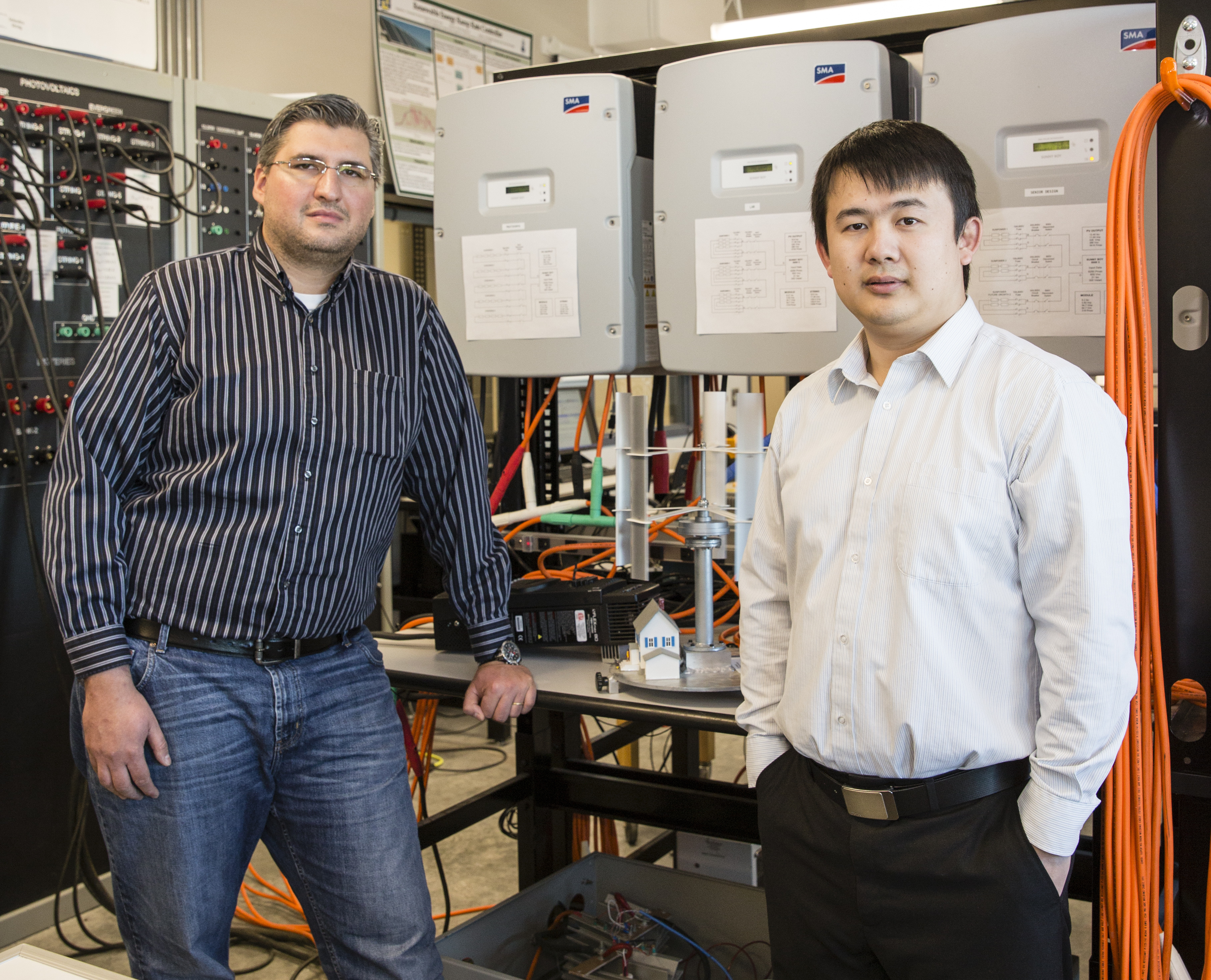
BROOKINGS (KELO AM) - Strategic use of locally produced, renewable energy through smart microgrids can reduce power costs and help prevent outages, according to assistant professors Wei Sun and Reinaldo Tonkoski of the electrical engineering and computer science department.They are developing the smart power management technologies that will make it possible for communities and businesses to use locally produced wind and solar energy yet maintain a consistent, reliable power system. The automated system needed to integrate renewables will also facilitate development of an intelligent power restoration system called a self-healing smart grid that can help prevent power outages.
They are the first SDSU researchers to receive a Software Engineering Innovation Foundation grant.An additional $87,000 from the South Dakota Board of Regents supports development of these power management tools, which could also benefit farms and communities. Two doctoral students and 12 master's students are working on power management and renewable energy systems integration in the SDSU microgrid laboratory.Lowering power costs by integrating renewables"Data centers are high consumers of power, but that supply has to be really reliable," Tonkoski pointed out. Though most data centers rely on the main power grid, they require locally available standby power in case of grid failure.Furthermore, integration of alternative energy sources will help reduce the demands that a data center puts on the power grid. Use of batteries and standby generators will help reduce the intermittency of solar and wind power so that it can support the grid."Renewables have uncertainty," Sun said, pointing out weather conditions affect the generation of solar and wind energy. In addition, power production varies based on time, cloud conditions and the wind speed, so integrating them into the distribution system means solving problems such as a maintaining power system balance, added Tonkoski. Specially designed controllers with new battery technologies can deal with these issues to get consistent power quality.
Remote power systems use diesel or gas generators, he pointed out. Adding solar or wind energy can save fuel and reduce the load on the generator."Integrating batteries into the system may boost the efficiency of the generator," Tonkoski added. The researchers will develop an algorithm that will determine when and how each power source can be efficiently used in a sustainable energy system. That includes when operating the generator or using batteries can increase the system's efficiency.With data centers being built worldwide, Sun noted, "some regions do not have a robust power grid." Therefore, construction of a new data center and the infrastructure to handle a power load in the range of 100 megawatts can take as long as three years. Using multiple energy sources through a microgrid system may reduce the timeline to establish new facilities.Redirecting power to prevent outagesThe automated system needed to integrate renewables will facilitate development of an intelligent power restoration system called a self-healing smart grid that can help prevent power outages, according to Sun. He received a three-year, $210,000 National Science Foundation Grant to support his research.Power plant operators follow guidelines based on offline scenarios, simulations and experimental data to respond to a blackout, Sun explained. "There are basically no computational tools to guide them through these emergencies."Consequently, the first step will be to develop tools to give operators what engineers call "real-time data," meaning what is happening at the moment rather than even 30 seconds ago. Three graduate students are working on the project.Sun collaborates with Clemson University Electrical Engineering and Computer Science Department Distinguished Professor Kumar Venayagamoorthy, who is developing advanced computational methods for the smart grid through a separate NSF grant.Once the algorithm, software code and hardware simulation as well as education and training materials have been completed, Sun hopes to demonstrate the system's effectiveness to major utility companies.